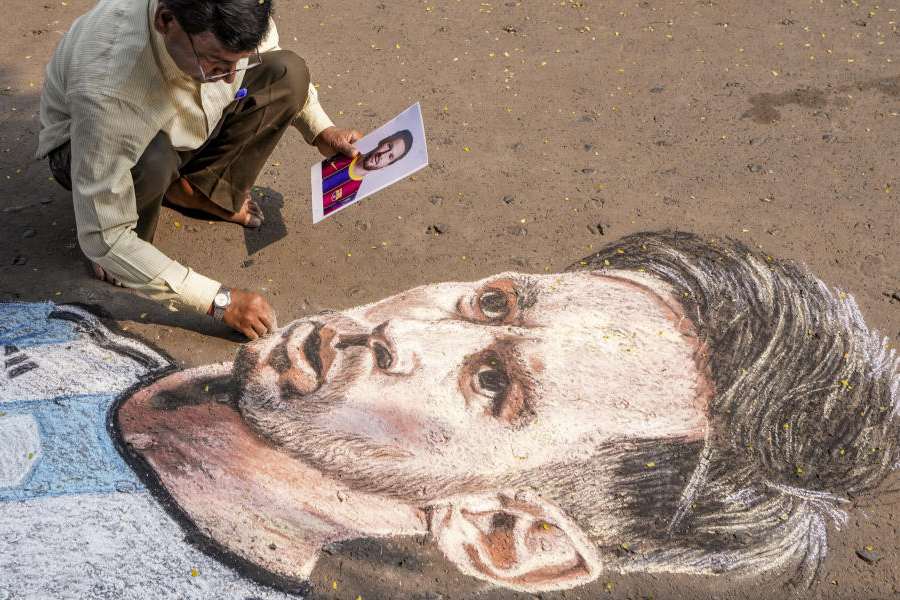 |
| Erosion of beach in coastal Orissa. Telegraph picture |
Cuttack, Aug. 18: The world’s largest sea turtle nesting beach on the Orissa coast is in peril because of massive erosion over the past three years.
Wildlife activists are concerned over gradual destruction of the traditional nesting grounds of Olive Ridley sea turtles at Gahirmatha Marine Sanctuary following sand dredging at the Mahanadi river mouth.
According to the Wildlife Society of Orissa (WSO), Nasi II Island and Pentha beach, which were regular nesting sites, were being gradually and distinctly worn away. While Nasi II Island had almost vanished, the threat posed to Pentha by sea waves had prompted the Orissa government to plan beach protection projects. Unprecedented erosion had also been noticed at two other nearby turtle mass nesting sites — Ekakula and Agarnasi.
WSO authorities alleged that the steady erosion process “can be correlated to the massive sand dredging carried out near the Mahanadi river mouth by Essar Steel Orissa Ltd (ESOL) over the past two-and-a-half years. Continued sand dredging is also adversely impacting the fragile habitat of Mahanadi estuary which is a breeding ground for many brackish aquatic fauna such as shrimps, crabs, mollusca, and so on.”
WSO secretary Biswajit Mohanty told The Telegraph: “Mahanadi river washes down a huge quantity of sediment during the monsoon, which is critical to the beach building process on the turtle nesting beaches of Gahirmatha Marine Sanctuary. As the ocean currents flow for eight months in a year in the northward direction, such sediment flushed out from the Mahanadi mouth is deposited on the shores of the marine sanctuary, which lies to the north of the river mouth.”
WSO had written to the Union secretary, ministry of environment and forests (MoEF), and the additional director general (wildlife) on August 16 urging them to issue directions to the state government to immediately stop the “illegal dredging activity” being carried in violation of CRZ Notification, 2011.
The CRZ Rules, 2011, make it clear that the entire river stretch from the low-tide line on one bank to the low-tide line on the opposite bank is a CRZ area. The rules prohibit sand dredging from the any CRZ area.










